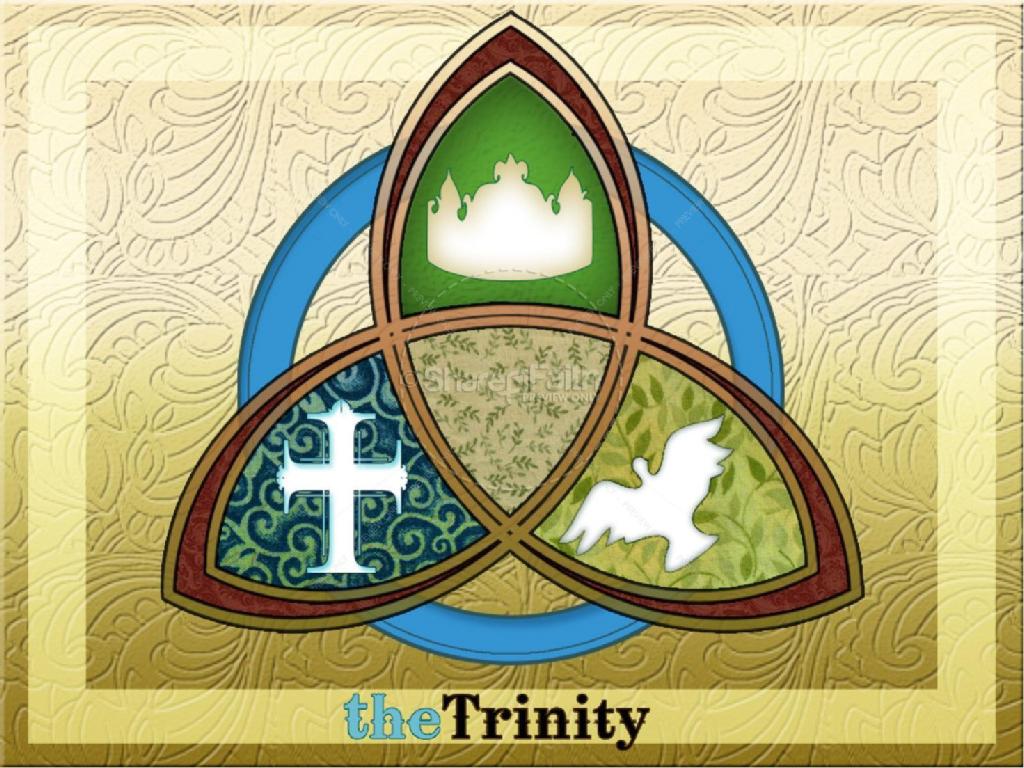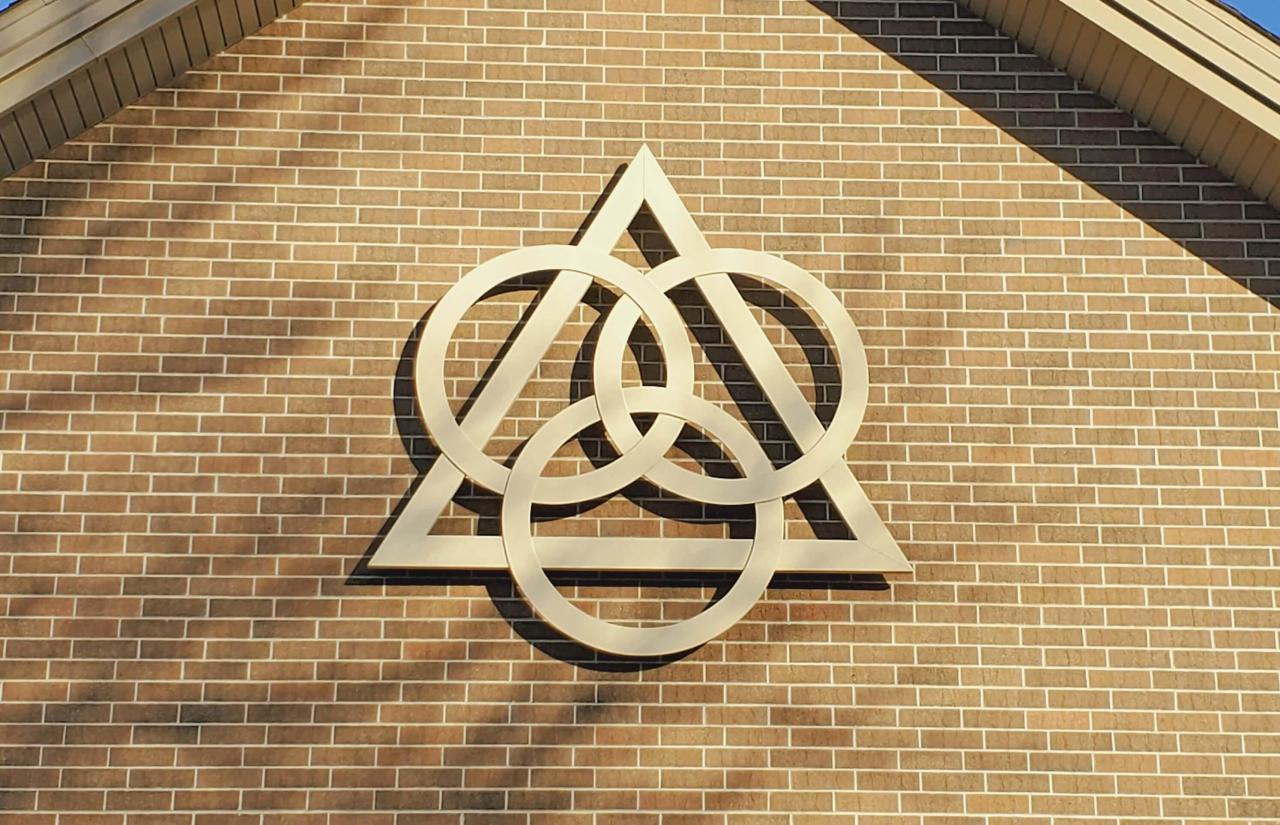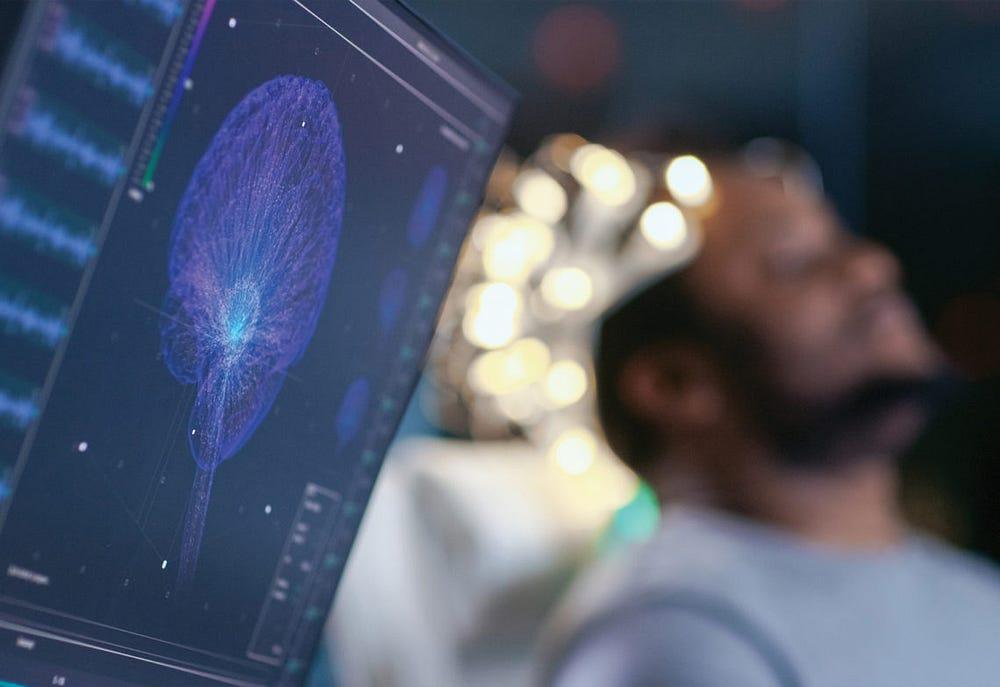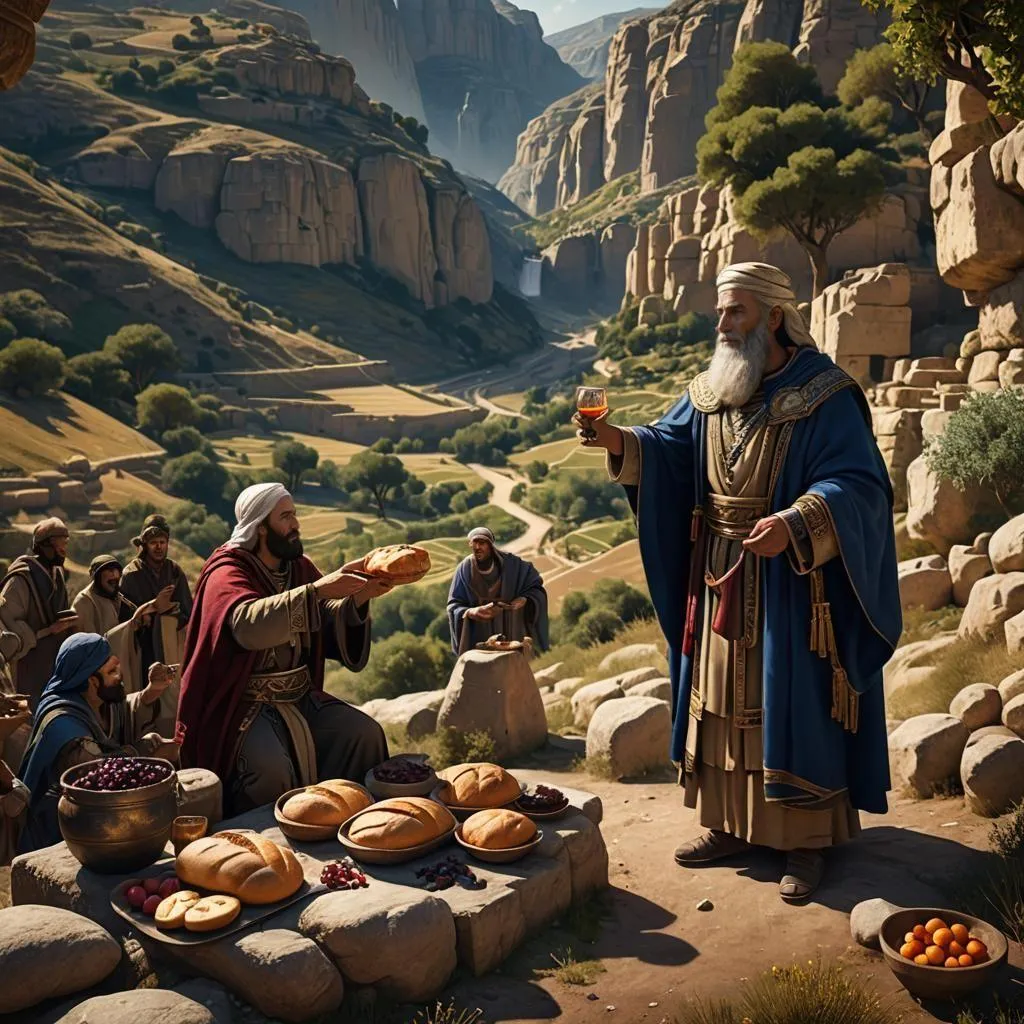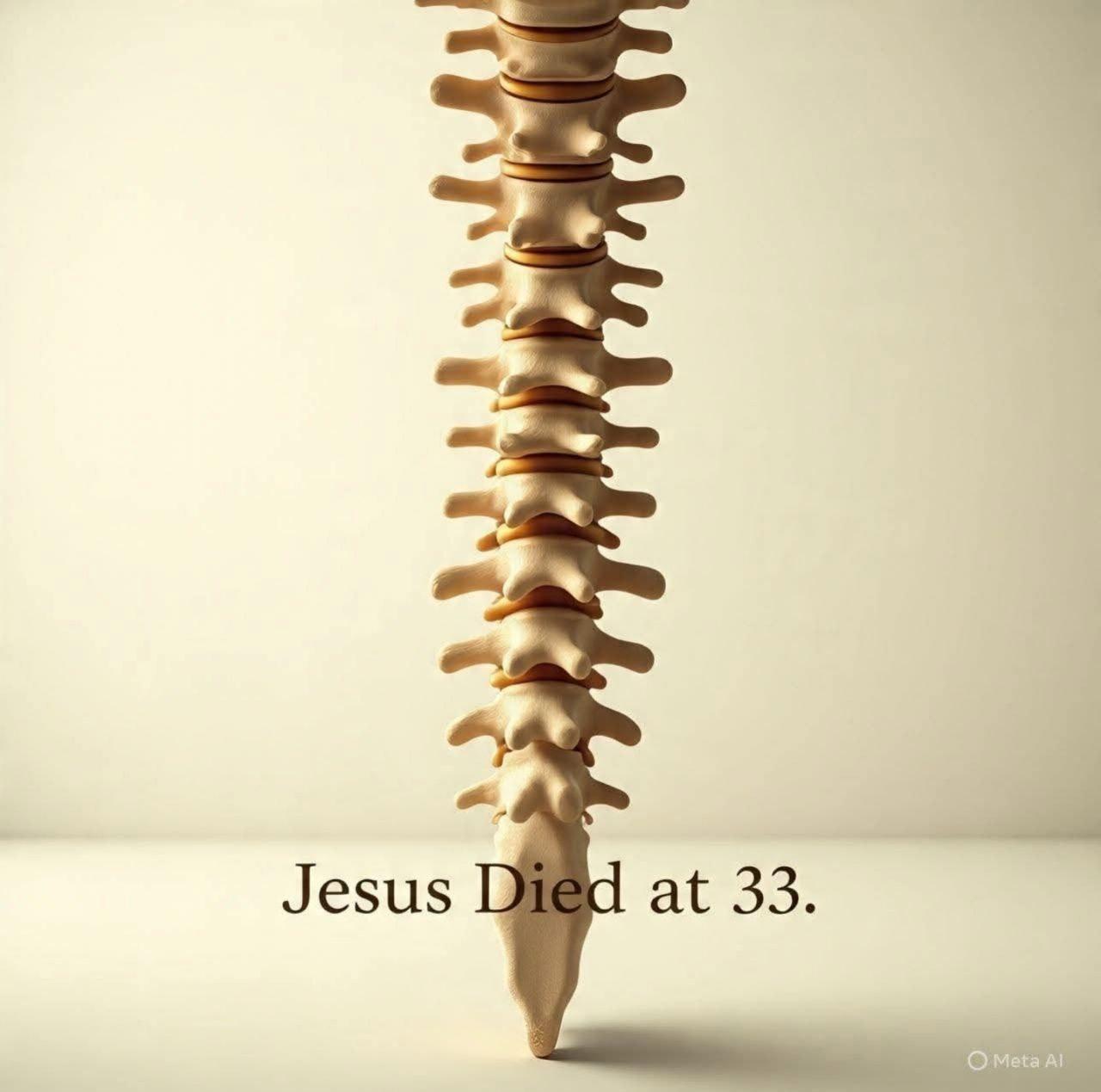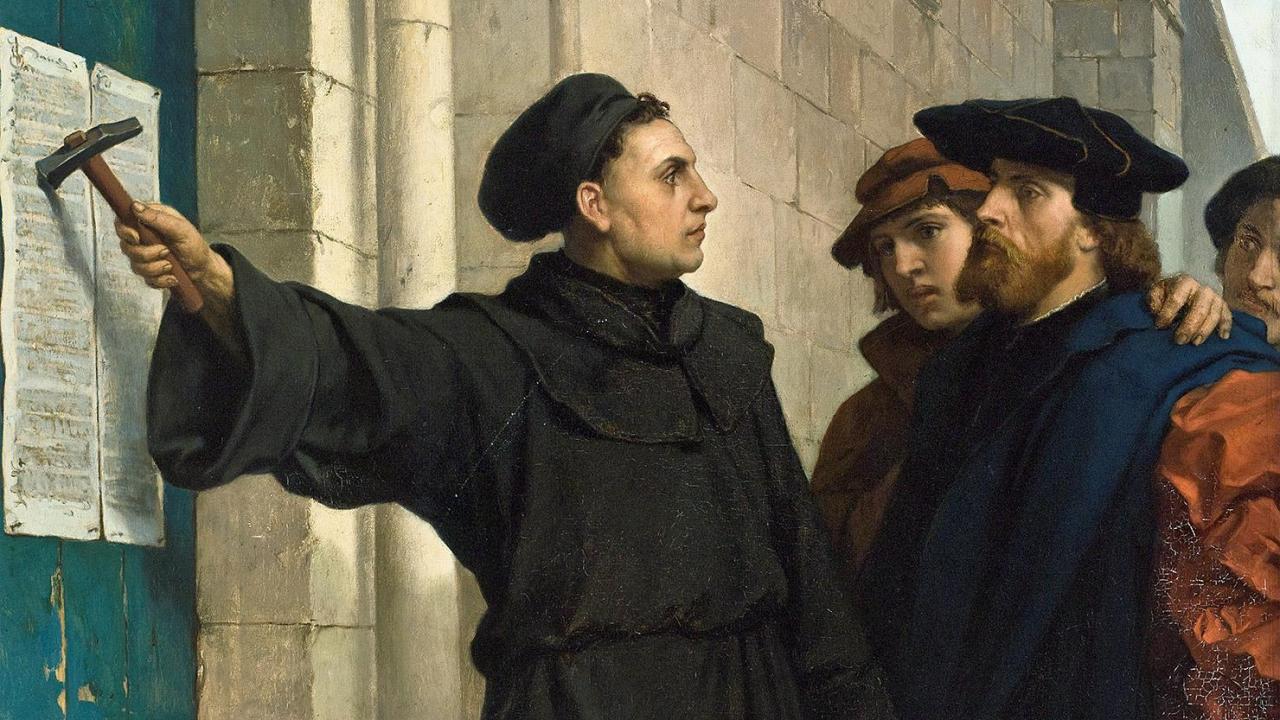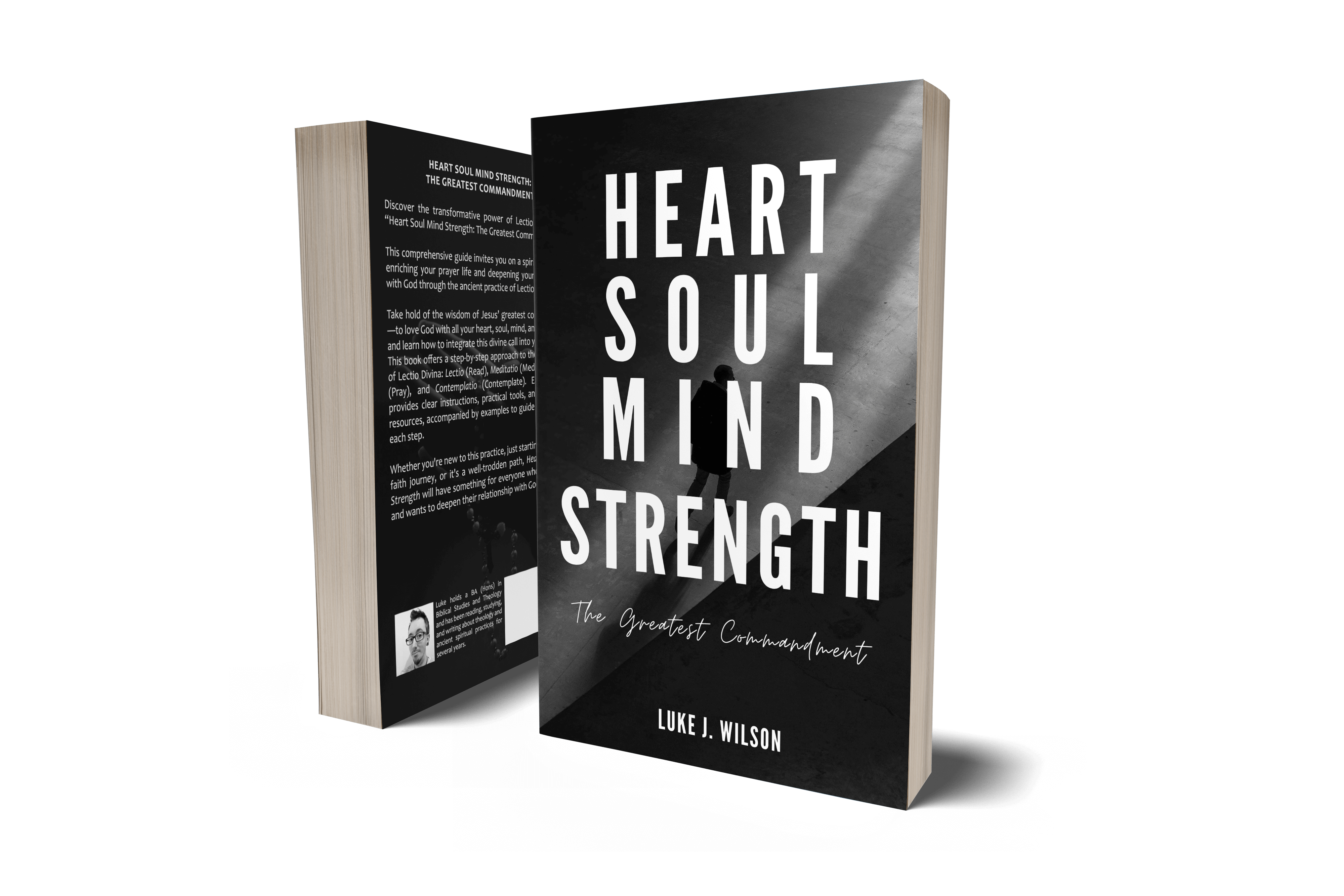What is Monarchical Trinitarianism?

Monarchical Trinitarianism, also referred to as the “Monarchy of the Father,” is a theological perspective that asserts the Father as the sole source (or monarch) within the Trinity. This view maintains a clear distinction of roles among the Father, the Son, and the Holy Spirit while upholding their unity in essence. It is essential to distinguish this from Monarchianism, a heretical belief condemned in the 4th century, which posited that God is a single person rather than three distinct persons.
The Eternal Begottenness of the Son
The term “created” used by the early pre-Nicene Fathers does not align with the Arian view, which posits that the Son was created ex nihilo (out of nothing), making Him a creature. As Arius infamously declared, “there was a time when the Son was not”. Rather, the Fathers articulated that the Son was begotten out of the Father, emphasising His divine origin and eternal existence within the Father’s bosom (cf. John 1:18 in Greek). As Justin Martyr explains, “For Christ is the first-begotten of God, and we have declared above that He is the Word of whom every race of men were partakers; and those who lived reasonably are Christians, even though they have been thought atheists” (Justin Martyr, First Apology, Chapter 46). This highlights that the Son, the Word, existed eternally with the Father before being begotten and manifested.
Similarly, Hippolytus expounds on this concept, noting that “God, subsisting alone, and having nothing contemporaneous with Himself, determined to create the world … For He was neither without reason, nor wisdom, nor power, nor counsel And all things were in Him, and He was the All. When He willed, and as He willed, He manifested His word in the times determined by Him, and by Him He made all things. … And thus there appeared another beside Himself. But when I say another, I do not mean that there are two Gods, but that it is only as light of light, or as water from a fountain, or as a ray from the sun. For there is but one power, which is from the All; and the Father is the All, from whom cometh this Power, the Word. And this is the mind which came forth into the world, and was manifested as the Son of God.” (Hippolytus, Against the Heresy of One Noetus, Chapter 10–11). Here, Hippolytus underscores the eternal existence of the Word within God, proceeding from the Father and being of the same essence.
The Procession of the Holy Spirit
The procession of the Holy Spirit from the Father is another essential aspect of Monarchical Trinitarianism. The Spirit, like the Son, derives His essence from the Father, ensuring that He is co-equal and consubstantial with the Father and the Son. Tertullian speaks to this procession in his work, Against Praxeas, explaining how the Word and Spirit derive their essence from the Father.
But still the tree is not severed from the root, nor the river from the fountain, nor the ray from the sun; nor, indeed, is the Word separated from God. … Now the Spirit indeed is third from God and the Son; just as the fruit of the tree is third from the root, or as the stream out of the river is third from the fountain, or as the apex of the ray is third from the sun. Nothing, however, is alien from that original source whence it derives its own properties. In like manner the Trinity, flowing down from the Father through intertwined and connected steps, does not at all disturb the Monarchy, while it at the same time guards the state of the Economy. (Tertullian, Against Praxeas, Chapter 8).
Looking at how Tertullian describes this doctrine, we can see how he has gone to lengths to carefully explain how the relationship within the Trinity exists together and relate to one another, while keeping intact the source and essence of divinity united and uncompromised. When we talk about these things, we use terms like “ontological” and “economy” to help to describe the Godhead. Ontology is the study of being, and what makes something what it is by nature. The economy of the Trinity refers to the outworking and activity of the divine Persons.
This points us to the distinction between the Father’s primacy and “monarchy” as the divine source, and the “economy” between the Persons in their roles in salvation and redemptive history. Ontologically the Persons of the Trinity are the same as they share in the same essence of the Father, and thus co-equal and co-eternal, but in terms of how they relate to one another and to humanity, there is a type of subordination. As Jesus said in John 5:19–23, “the Son can do nothing on his own, but only what he sees the Father doing; for whatever the Father does, the Son does likewise.”, similar also to how Jesus said that only the Father knows the hour of the End, and that the Son doesn’t know (Mark 13:32).
The One True God
Central to Monarchical Trinitarianism is the recognition of the Father as the One True God, or άυτόθεος (autotheos), meaning self-existent. He is the uncaused, unbegotten source of divinity, from whom the Son and the Spirit derive their being. The early Fathers were clear that this does not diminish the divinity of the Son and the Spirit but rather establishes the order within the Godhead. Origen articulates this succinctly in his De Principiis, “…it may be understood that the Son is not of a different goodness, but of that only which exists in the Father, of whom He is rightly termed the image, because He proceeds from no other source but from that primal goodness, lest there might appear to be in the Son a different goodness from that which is in the Father.” (Origen, De Principiis, Book 1, Chapter 2.13).
While Origen’s language reflects a certain subordination in terms of order or generation, not essence, it points to the Father’s role as the uncreated fountainhead of divinity. This view no doubt comes from the New Testament itself, from such verses as Hebrews 1:3, Philippians 2:6–8, and the following:
For ‘God has put all things in subjection under his feet.’ But when it says, ‘All things are put in subjection’, it is plain that this does not include the one who put all things in subjection under him. When all things are subjected to him, then the Son himself will also be subjected to the one who put all things in subjection under him, so that God may be all in all. (1 Corinthians 15:27–28).
The Distinction from Monarchianism
It is crucial to differentiate Monarchical Trinitarianism from Monarchianism, despite the similar sounding names. Monarchianism, which shares similar theology with Modalism/Sabellianism, was condemned as heresy in the 4th century. It denied the distinct personhood within the Godhead, positing that the Father, Son, and Holy Spirit are merely different modes or aspects of one God. This view was rejected by the early church for undermining the distinct personal relationships and the eternal generation and procession within the Trinity.
Monarchians were opposed by “Logos theologians”, such as Tertullian, Hippolytus, Clement of Alexandria, and Origen of Alexandria.
Catechism of the Orthodox Faith
The Orthodox Church holds more prominently to the Monarchy of the Father in their Trinitarian doctrines. According to the Catechism of the Orthodox Faith, the Monarchy of the Father is articulated as follows:
God the Father is neither begotten nor proceeds from any other Person, he is the cause, source and principle. This is called the Monarchy of the Father. (Catechism of the Orthodox Faith, 094)
The Father, the Son and the Holy Spirit share equal majesty as being the eternal, uncreated Savior and Lord. The Father is true God, the Son equally true God, and the Holy Spirit true God. This ontological or essential equality was expressed by the Church by the expression “homoousion” (of the same essence) to condemn Arianism and affirm that the Son is co-eternal and co-uncreated with the Father. This does not negate different roles or functions. (Catechism of the Orthodox Faith, 095)
In this view, when the Son says that “the Father is greater than I” (John 14:28), he is referring to the fact that the Father is the cause and origin. Various Church Fathers have understood this verse in this regard:
“The Son does not say, ‘My Father is better than I,’ lest we should conceive him to be foreign to his nature, but ‘greater,’ not indeed in greatness nor in time, but because of his generation from the Father himself” (St Athanasius, Orations against the Arians, 1.58)
“Since the Son’s origin (arche) is from the Father, in this respect the Father is greater, as cause and origin. This is why the Lord says, ‘My Father is greater than I.’ Indeed, what else does the word Father signify unless being the cause and origin of that which is begotten of Him?” (St Basil, Against Eunomius, 1.25)
“Superior greatness belongs to the cause, equality to the nature… To say that [the Father] is greater than [the Son] in his humanity is certainly true, but it is not the point here, since it is no wonder that God is greater than man” (St Gregory of Nazianzus, Oration, 30.7)
“If anyone says that the Father is greater in so far as He is the cause of the Son, we will not dispute this. But this, however, does not make the Son to be of a different essence” (St John Chrysostom, Homily, 70)
In summary, the perspective of the Orthodox Church, and various theologians in the early church, explain the Monarchy of the Father through His supreme greatness as the “cause, source, and principle” while simultaneously affirming the co-equality of the Persons within the Trinity, since they share the same divine essence. Anything “lesser” in the Son or Spirit is due to their cause, function or role rather than their ontological reality.
Biblical Foundations and Theological Consistency
The biblical foundation for Monarchical Trinitarianism is evident in Scriptures such as Proverbs 8:22–30, which speaks of Wisdom (often interpreted as a prefiguration of Christ) being brought forth before the creation of the world. The Apostle Paul in Colossians 1:15–17 refers to Christ as “the image of the invisible God, the firstborn over all creation. For by him all things were created”, affirming the Son’s role in creation and preexistence. Additionally, John’s Gospel affirms the divinity of Christ, “In the beginning was the Word, and the Word was with God, and the Word was God” (John 1:1).
These passages, alongside the teachings of the Ante-Nicene Fathers, confirm the historical orthodoxy of Monarchical Trinitarianism, which maintains the unity and co-equality of the Trinity while acknowledging the Father as the source. This theological framework provides a robust understanding of the relational dynamics within the Godhead, affirming the eternal generation of the Son and the procession of the Spirit from the Father, without compromising the divine essence shared among the three Persons.
In conclusion, Monarchical Trinitarianism, grounded in the early church’s teachings and biblical exegesis, offers a coherent and historically rooted articulation of the Christian doctrine of the Trinity. It emphasises the Father’s unique role as the source of divinity while affirming the full deity and consubstantiality of the Son and the Spirit, thus preserving the unity and diversity within the Godhead.
Sources & Further Reading
- Hippolytus of Rome: The Extant Works and Fragments: Dogmatical and Historical (Roberts-Donaldson translation) (earlychristianwritings.com)
- Justin Martyr: First Apology | Patristics.info
- CHURCH FATHERS: Against Praxeas (Tertullian) (newadvent.org)
- Catechism of the Orthodox Faith
- Monarchianism | Modalism, Sabellianism, Unitarianism | Britannica
- Sabellianism | Monarchianism, Modalism & Patripassianism | Britannica
- What’s the Difference between the Ontological and the Economic Trinity? (ligonier.org)
- The Relationship Between Jesus and Sophia | The Sacred Faith: Timeless Truths for Modern Minds
- CHURCH FATHERS: De Principiis, Book I (Origen) (newadvent.org)
- The Sacred Faith: Trinity Articles
Leave a comment Like Back to Top Seen 12.7K times Liked 0 times
Enjoying this content?
Support my work by becoming a patron on Patreon!
By joining, you help fund the time, research, and effort that goes into creating this content — and you’ll also get access to exclusive perks and updates.
Even a small amount per month makes a real difference. Thank you for your support!
Subscribe to Updates
If you enjoyed this, why not subscribe to free email updates and join over 864 subscribers today!
My new book is out now! Order today wherever you get books
Recent Posts
Luke J. Wilson | 19th August 2025 | Fact-Checking
A poetic post has been circulating widely on Facebook, suggesting that our anatomy mirrors various aspects of Scripture. On the surface it sounds inspiring, but when we take time to weigh its claims, two main problems emerge. The viral post circulating on Facebook [Source] First, some of its imagery unintentionally undermines the pre-existence of Christ, as if Jesus only “held the earth together” for the 33 years of His earthly life. Second, it risks reducing the resurrection to something like biological regeneration, as if Jesus simply restarted after three days, instead of being raised in the miraculous power of God. Alongside these theological dangers, many of the scientific claims are overstated or symbolic rather than factual. Let’s go through them one by one. 1. “Jesus died at 33. The human spine has 33 vertebrae. The same structure that holds us up is the same number of years He held this Earth.” The human spine does generally have 33 vertebrae, but that number includes fused bones (the sacrum and coccyx), and not everyone has the same count. Some people have 32 or 34. More importantly, the Bible never says Jesus was exactly 33 when He died — Luke tells us He began His ministry at “about thirty” (Luke 3:23), and we know His public ministry lasted a few years, but His precise age at death is a tradition, not a biblical statement. See my other recent article examining the age of Jesus here. Theologically, the phrase “the same number of years He held this Earth” is problematic. Jesus did not hold the world together only for 33 years. The eternal Word was with God in the beginning (John 1:1–3), and “in Him all things hold together” (Colossians 1:17). Hebrews says He “sustains all things by His powerful word” (Hebrews 1:3). He has always upheld creation, before His incarnation, during His earthly ministry, and after His resurrection. To imply otherwise is to risk undermining the pre-existence of Christ. 2. “We have 12 ribs on each side. 12 disciples. 12 tribes of Israel. God built His design into our bones.” Most people do have 12 pairs of ribs, though some are born with an extra rib, or fewer. The number 12 is certainly biblical: the 12 tribes of Israel (Genesis 49), the 12 apostles (Matthew 10:1–4), and the 12 gates and foundations of the New Jerusalem (Revelation 21). But there’s no biblical connection between rib count and these symbolic twelves. This is a case of poetic association, not design woven into our bones. The only real mention of ribs in Scripture is when Eve is created from one of Adam’s ribs in Genesis 2:21–22, which has often led to the teaching in some churches that men have one less rib than women (contradicting this new claim)! 3. “The vagus nerve runs from your brain to your heart and gut. It calms storms inside the body. It looks just like a cross.” The vagus nerve is real and remarkable. It regulates heart rate, digestion, and helps calm stress, and doctors are even using vagus nerve stimulation as therapy for epilepsy, depression, and inflammation showing it really does “calm storms” in the body. But it does not look like a cross anatomically. The language about “calming storms” may echo the way Jesus calmed the storm on the Sea of Galilee (Mark 4:39), but here again the poetic flourish stretches science (and Scripture) beyond what’s accurate. 4. “Jesus rose on the third day. Science tells us that when you fast for 3 days, your body starts regenerating. Old cells die. New ones are born. Healing begins. Your body literally resurrects itself.” There’s a serious theological problem here. To equate Jesus’ resurrection with a biological “regeneration” after fasting is to misrepresent what actually happened. Fasting can indeed trigger cell renewal and immune repair, but it cannot bring the dead back to life. It’s still a natural process that happens...
Luke J. Wilson | 08th July 2025 | Islam
“We all worship the same God”. Table of Contents 1) Where YHWH and Allah Appear Similar 2) Where Allah’s Character Contradicts YHWH’s Goodness 3) Where Their Revelations Directly Contradict Each Other 4) YHWH’s Love for the Nations vs. Allah’s Commands to Subjugate 5) Can God Be Seen? What the Bible and Qur’an Say 6) Salvation by Grace vs. Salvation by Works Conclusion: Same God? Or Different Revelations? You’ve heard it from politicians, celebrities, and even some pastors. It’s become something of a modern mantra, trying to shoehorn acceptance of other beliefs and blend all religions into one, especially the Abrahamic ones. But what if the Bible and Qur’an tell different stories? Let’s see what their own words reveal so you can judge for yourself. This Tweet recently caused a stir on social media 1) Where YHWH and Allah Appear Similar Many point out that Jews, Christians, and Muslims share a belief in one eternal Creator God. That’s true — up to a point. Both the Bible and Qur’an describe God as powerful, all-knowing, merciful, and more. Here’s a list comparing some of the common shared attributes between YHWH and Allah, with direct citations from both Scriptures: 26 Shared Attributes of YHWH and Allah According to the Bible (NRSV) and the Qur’an Eternal YHWH: “From everlasting to everlasting you are God.” — Psalm 90:2 Allah: “He is the First and the Last…” — Surah 57:3 Creator YHWH: “In the beginning God created the heavens and the earth.” — Genesis 1:1 Allah: “The Originator of the heavens and the earth…” — Surah 2:117 Omnipotent (All-Powerful) YHWH: “Nothing is too hard for you.” — Jeremiah 32:17 Allah: “Allah is over all things competent.” — Surah 2:20 Omniscient (All-Knowing) YHWH: “Even before a word is on my tongue, O LORD, you know it.” — Psalm 139:4 Allah: “He knows what is on the land and in the sea…” — Surah 6:59 Omnipresent (Present Everywhere) YHWH: “Where can I go from your Spirit?” — Psalm 139:7–10 Allah: “He is with you wherever you are.” — Surah 57:4 Holy YHWH: “Holy, holy, holy is the LORD of hosts.” — Isaiah 6:3 Allah: “The Holy One (Al-Quddus).” — Surah 59:23 Just YHWH: “A God of faithfulness and without injustice.” — Deuteronomy 32:4 Allah: “Is not Allah the most just of judges?” — Surah 95:8 Merciful YHWH: “The LORD, merciful and gracious…” — Exodus 34:6 Allah: “The Most Gracious, the Most Merciful.” — Surah 1:1 Compassionate YHWH: “As a father has compassion on his children…” — Psalm 103:13 Allah: “He is the Forgiving, the Affectionate.” — Surah 85:14 Faithful YHWH: “Great is your faithfulness.” — Lamentations 3:22–23 Allah: “Indeed, the promise of Allah is truth.” — Surah 30:60 Unchanging YHWH: “For I the LORD do not change.” — Malachi 3:6 Allah: “None can change His words.” — Surah 6:115 Sovereign YHWH: “The LORD has established his throne in the heavens…” — Psalm 103:19 Allah: “Blessed is He in whose hand is dominion…” — Surah 67:1 Loving YHWH: “God is love.” — 1 John 4:8 Allah: “Indeed, my Lord is Merciful and Affectionate (Al-Wadud).” — Surah 11:90 Forgiving YHWH: “I will not remember your sins.” — Isaiah 43:25 Allah: “Allah forgives all sins…” — Surah 39:53 Wrathful toward evil YHWH: “The LORD is a jealous and avenging God…” — Nahum 1:2 Allah: “For them is a severe punishment.” — Surah 3:4 One/Unique YHWH: “The LORD is one.” — Deuteronomy 6:4 Allah: “Say: He is Allah, One.” — Surah 112:1 Jealous of worship YHWH: “I the LORD your God am a jealous God.” �...
Luke J. Wilson | 05th June 2025 | Blogging
As we commemorated the 500th anniversary of the Protestant Reformation this year, the familiar image of Martin Luther striding up to the church door in Wittenberg — hammer in hand and fire in his eyes — has once again taken centre stage. It’s a compelling picture, etched into the imagination of many. But as is often the case with historical legends, closer scrutiny tells a far more nuanced and thought-provoking story. The Myth of the Door: Was the Hammer Ever Raised? Cambridge Reformation scholar Richard Rex is one among several historians who have challenged the romanticised narrative. “Strangely,” he observes, “there’s almost no solid evidence that Luther actually went and nailed them to the church door that day, and ample reasons to doubt that he did.” Indeed, the first image of Luther hammering up his 95 Theses doesn’t appear until 1697 — over 180 years after the fact. Eric Metaxas, in his recent biography of Luther, echoes Rex’s scepticism. The earliest confirmed action we can confidently attribute to Luther on 31 October 1517 is not an act of public defiance, but the posting of two private letters to bishops. The famous hammer-blow may never have sounded at all. Conflicting Accounts Philip Melanchthon, Luther’s successor and first biographer, adds another layer of complexity. He claimed Luther “publicly affixed” the Theses to the door of All Saints’ Church, but Melanchthon wasn’t even in Wittenberg at the time. Moreover, Luther himself never mentioned posting the Theses publicly, even when recalling the events years later. Instead, he consistently spoke of writing to the bishops, hoping the matter could be addressed internally. At the time, it was common practice for a university disputation to be announced by posting theses on church doors using printed placards. But no Wittenberg-printed copies of the 95 Theses survive. And while university statutes did require notices to be posted on all church doors in the city, Melanchthon refers only to the Castle Church. It’s plausible Luther may have posted the Theses later, perhaps in mid-November — but even that remains uncertain. What we do know is that the Theses were quickly circulated among Wittenberg’s academic elite and, from there, spread throughout the Holy Roman Empire at a remarkable pace. The Real Spark: Ink, Not Iron If there was a true catalyst for the Reformation, it wasn’t a hammer but a printing press. Luther’s Latin theses were swiftly reproduced as pamphlets in Basel, Leipzig, and Nuremberg. Hundreds of copies were printed before the year’s end, and a German translation soon followed, though it may never have been formally published. Within two weeks, Luther’s arguments were being discussed across Germany. The machinery of mass communication — still in its relative infancy — played a pivotal role in what became a theological, political, and social upheaval. The Letters of a Conscientious Pastor Far from the bold revolutionary of popular imagination, Luther appears in 1517 as a pastor deeply troubled by the abuse of indulgences, writing with respectful concern to those in authority. In his letter to Archbishop Albrecht of Mainz, he humbly addresses the archbishop as “Most Illustrious Prince,” and refers to himself as “the dregs of humanity.” “I, the dregs of humanity, have so much boldness that I have dared to think of a letter to the height of your Sublimity,” he writes — hardly the voice of a man trying to pick a fight. From Whisper to Roar Luther’s initial appeal through formal channels was, predictably, ignored. He was advised not to make trouble. But as opposition mounted and corruption remained unchecked, the once quiet reformer grew louder. His theological convictions deepened, and his public persona evolved. The lion did eventually roar — but not on October 31. A Catholic Reformer, Not a Protestant Founder It’s vital to remem...
Luke J. Wilson | 20th May 2025 | Islam
You are not alone. Around the world, many Muslims — people who already believe in one God, pray, and seek to live righteously — are drawn to know more about Jesus (ʿĪsā in Arabic). Some have heard He is more than a prophet. Some have sensed His presence in a dream or vision. And some simply long to know God more deeply, personally, and truly. So what does it mean to become a Christian? And how can you take that step? This guide is for you. 1. What Christians Believe About God and Jesus ➤ One God, Eternal and Good Christians believe in one God — the same Creator known to Abraham, Moses, and the prophets. But we also believe God is more personal and relational than many realise. In His love, He has revealed Himself as Father, Son (Jesus), and Holy Spirit — not three gods, but one God in three persons. ➤ Jesus Is More Than a Prophet Muslims honour Jesus as a great prophet, born of the virgin Mary. Christians also affirm this — but go further. The Bible teaches that Jesus is the Word of God (Kalimat Allāh), who became flesh to live among us. He performed miracles, healed the sick, raised the dead — and lived without sin.Jesus came not just to teach but to save — to bring us back to God by bearing our sins and rising again in victory over death. 2. Why Do We Need Saving? ➤ The Problem: Sin All people — no matter their religion — struggle with sin. We lie, get angry, feel jealous, act selfishly, or fail to love God fully. The Bible says: “All have sinned and fall short of the glory of God.” (Romans 3:23) Sin separates us from God. And no matter how many good deeds we do, we can never make ourselves perfect or holy before Him. ➤ The Solution: Jesus Because God loves us, He did not leave us in our sin. He sent Jesus, His eternal Word, to live as one of us. Jesus died willingly, offering His life as a sacrifice for our sins, then rose again on the third day. “But God proves his love for us in that while we still were sinners Christ died for us.” (Romans 5:8) 3. How Do I Become a Christian? Becoming a Christian is not about joining a Western religion. It’s about entering a relationship with God through faith in Jesus Christ. Here is what the Bible says: ✝️ 1. Believe in Jesus Believe that Jesus is the Son of God, that He died for your sins, and that He rose again. “If you confess with your lips that Jesus is Lord and believe in your heart that God raised him from the dead, you will be saved.” (Romans 10:9) 💔 2. Repent of Your Sins Turn away from sin and ask God to forgive you. This is called repentance. It means being truly sorry and choosing a new way. “Repent therefore, and turn to God so that your sins may be wiped out.” (Acts 3:19) 💧 3. Be Baptised Jesus commands His followers to be baptised in water as a sign of their new life. Baptism represents washing away your old life and rising into a new one with Jesus. “Repent and be baptised every one of you in the name of Jesus Christ so that your sins may be forgiven.” (Acts 2:38) 🕊️ 4. Receive the Holy Spirit When you believe in Jesus, God gives you the Holy Spirit to live within you, guiding you, comforting you, and helping you follow His will. “You received the Spirit of adoption, by whom we cry, ‘Abba! Father!’” (Romans 8:15) 🧎 5. Begin a New Life As a Christian, you are born again — spiritually renewed. You begin to grow in faith, love, and holiness. You read the Bible, pray, fast, and gather with other believers. Your life is no longer your own; you now live for God. 4. What Does a Christian Life Look Like? Jesus said: “If anyone wants to become my followers, let them deny themselves and take up their cross and follow me.” (Matthew 16:24) This means: Loving God with all your heart Loving your neighbour — even your enemies Forgiving others ...


